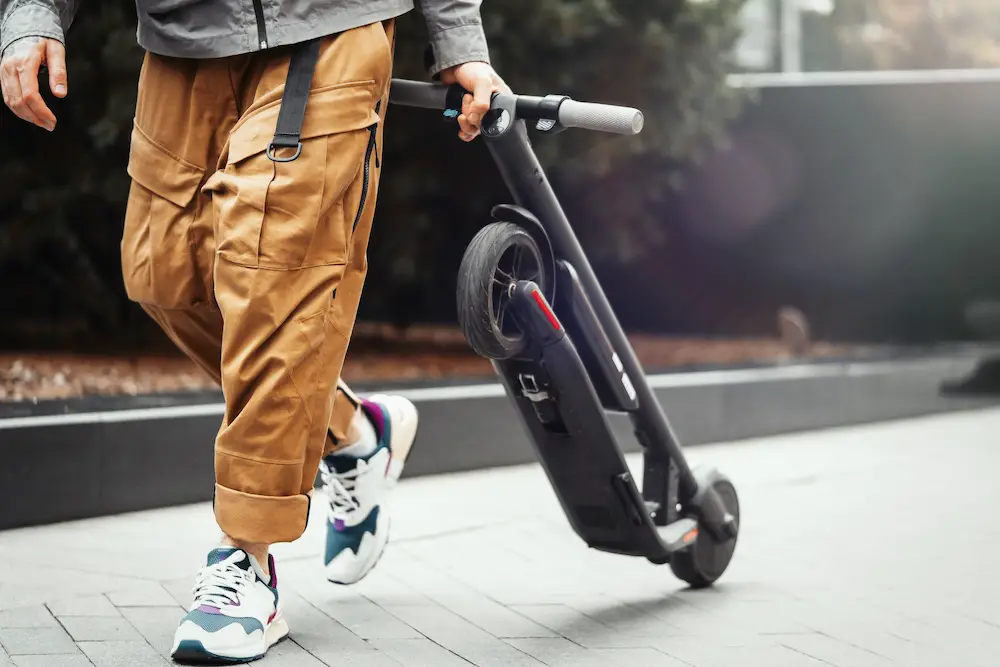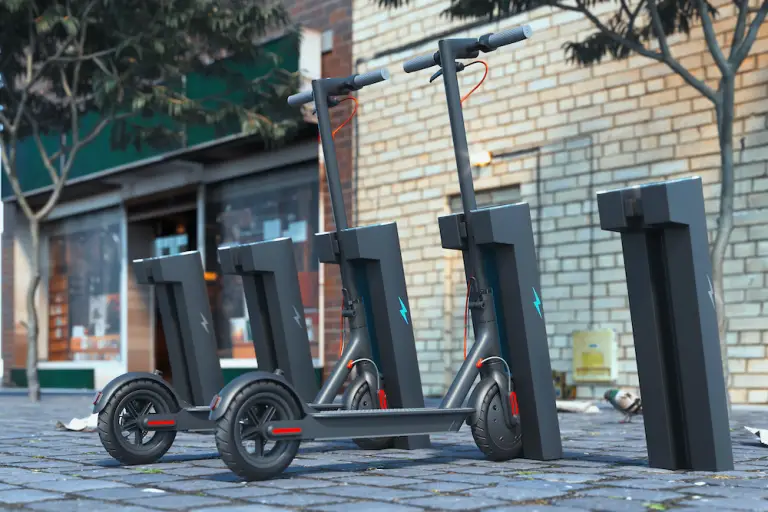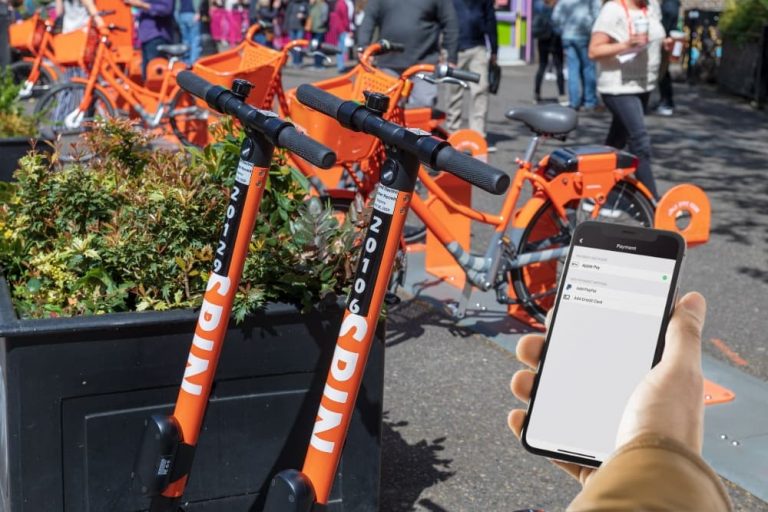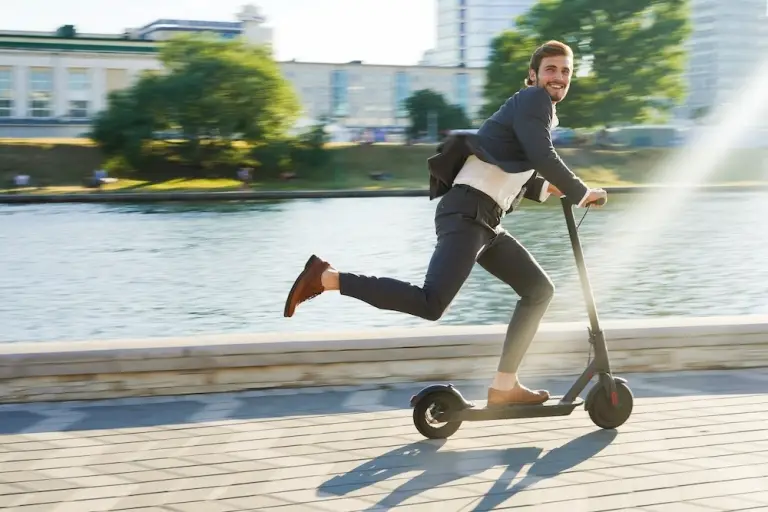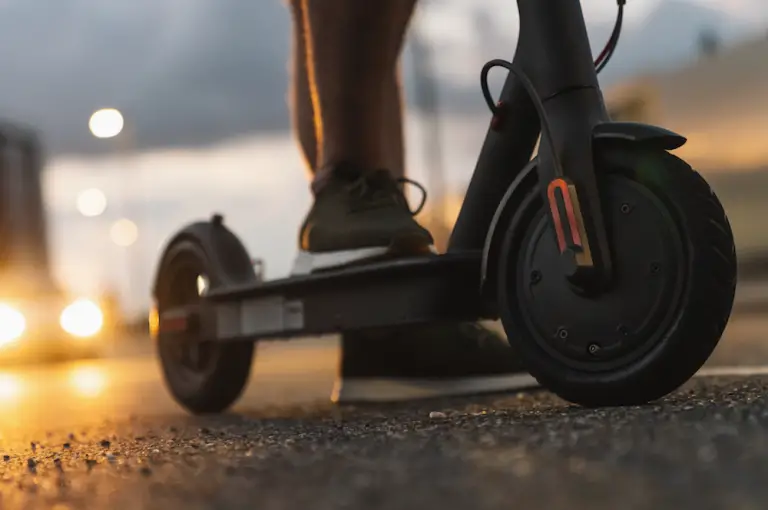How Much Does a Scooter Weigh: Tips for Traveling With an Electric Scooter
It’s important to ask how much does a scooter weighs since it can make or break how easy it is to commute with it.
Even though they are incredibly convenient for everyday use and can fold down smoothly, electric scooters are very heavy.
With that said, some manufacturers are beginning to come out with lighter models specifically designed for commuters.
In this guide, we’ll help you learn all of the best ways to carry your scooter, as well as essential traveling tips to help make commuting substantially easier.
How Much Does a Scooter Weigh
Overall, most electric scooters seem to hover somewhere around 27 to 35 pounds, though there are models that are a little less and a little more.
It all depends on the brand you’re going after and the features it has to offer, as designs with added items such as baskets are going to be substantially more onerous.
To give you an idea, here is a chart of the most popular scooter brands and the average weights of their models.
| Brand | Weight |
| E-TWOW Scooters | 23-24 pounds |
| QIEWA Q1Hummer | 55 pounds |
| Razor E100 | 26 pounds |
| NANROBOT D4+ | 43 pounds |
For most commuters, the idea of carrying a 55-pound scooter on a bus or train can be a lot to handle.
If you know the best ways you can carry your scooter, though, you’ll be able to evenly distribute the weight so that it becomes less of a hassle.
Many models also come with advanced features, such as alarms, so that you can park the scooter without the worry of it being stolen.
The Best Ways to Carry an Electric Scooter
If you have to carry your scooter during your journey, knowing how to do it can improve its convenience.
The three most common electric scooter accessories people use are a handle, carrying case, or a unique scooter strap.
With the help of the added accessories, you won’t ever have to worry about awkwardly arranging the scooter under your arm or having it unfold on you while you’re carrying it by the handlebars.
1. Electric Scooter Bag
Electric scooter bags are a fantastic option for someone who is looking for the highest level of protection for their device.
You’ll find these bags typically come with dustproof zippers as well as a waterproof coating to help prevent dust and moisture from affecting the sensitive components.
Also, you may notice the bags have reinforced handles to prevent the material from tearing over time.
There’s no doubt that electric scooter bags are the best for keeping your device safe, but they’re not the most convenient option.
If you ride your scooter from your home to the bus shelter, having to unpack and repack the scooter once you’re finished or ready to ride can be very time-consuming.
We have found that these bags are best for long-term storage, for example, during winter, or if you’re bringing your scooter on a trip with you.
2. Scooter Straps
A far more convenient alternative for everyday commuters is to invest in a scooter strap.
These straps are specifically designed to handle heavy loads and help to distribute the weight evenly across your shoulder.
Similar to a shoulder bag, you’ll be able to carry your scooter no matter where you’re headed easily.
It’s important to note that although the shoulder straps are incredibly comfortable to take advantage of, they can become uncomfortable over time.
You’ll find these are best when you’re taking a train or bus and if you’re doing minimal walking.
Shoulder straps are also quite convenient when commuting through a busy metropolitan area where riding your scooter might not be the best idea.
Scooter straps are typically built with extra padding to help take a lot of pressure off your shoulder.
You will also appreciate the reinforced stitching that prevents threads from snapping and fraying after dealing with the hefty nature of your scooter.
Most often, all you have to do is wrap, clip, or Velcro the strap to either end of your scooter to be able to carry it with ease.
3. Scooter Handles
If you’ve tried scooter straps in the past and they weren’t your favorite, another alternative is to opt for scooter handles.
You’ll find these designs are far more convenient to use in crowded areas where you want full control over your scooter.
Instead of worrying about the device swinging on your shoulder, you can lift, stow, and arrange it as necessary while commuting.
Another advantage of using a handle is that it helps make your scooter substantially easier to bring with you on trips.
Instead of adding to its weight and bulkiness with a case or a strap, you can have a simple handle that anyone can use.
Once it’s added to your scooter, you’ll also find it’s effortless to remove and reattach as necessary.
Scooter handles typically snap onto the main shaft of the scooter when folded, allowing you to carry it by hand.
Even when the unit has been extended fully, you’ll be able to ride the scooter without it interfering with its performance.
Above all else, handles are likely the least expensive option out of the other carrying products on this list.
Tips for Traveling with a Scooter
Once you’ve chosen how to carry your scooter, it’s best to know what to expect when you start commuting.
Since scooters can sometimes be more cumbersome than 40 pounds, you should be prepared for anything.
1. Air Traveling
You may be surprised to know that some electric scooters are certainly allowed on planes, though you’ll want to check with your specific carrier before your date of travel.
Most carriers will allow electric scooters with batteries that are 160Wh or less.
Travelers could also be expected to fit the scooter in the overhead cabin, as most are designed with lithium-ion batteries, which cannot be stowed with your checked baggage.
With that said, you may also want to take the weight and size of your scooter into account, as most airlines only allow bags measuring in at 22” x 14” x 9” to be stored overhead.
Also, many commuting scooters are far too large or heavy to be allowed in the overhead storage, so you might find it challenging to bring with you on your trip.
2. Folding Your Scooter
At first, you might assume that carrying your fully extended scooter is far more comfortable than folding it, which isn’t the case.
Luckily, most manufacturers have a one- or two-step process to make it easier to fold your scooter into a compact size for travel.
In most cases, all you have to do is engage a lever or a button, and then bring the handlebars down into the deck, locking it into place.
The only downside to folding your scooter is that the weight isn’t distributed as evenly as it would while the unit is extended.
This is the reason it is a great idea to invest in a strap, bag, or handle to help make carrying your scooter easier.
3. Locking and Securing the Scooter
Scooters are one of the most natural things for thieves to target, even if they are as massive as 50 pounds in some cases.
With that said, you’ll want to take the time to make sure you properly lock your unit and ensure an alarm is engaged.
Plenty of higher-end electric scooters come equipped with remote-controlled alarms, similar to your car, to help deter criminal activity.
Always ensure that when you are locking your scooter, you not only wrap the handlebars but the spokes of the wheels as well.
Final Thoughts
So, how much does a scooter weigh?
On average, scooters typically range from 27 to 35 pounds, with kid’s models weighing even less.
Instead of having to carry your scooter uncomfortably daily, there are plenty of alternatives for you to choose from.
Travel has never been more accessible once you can master the real weight of your scooter.

